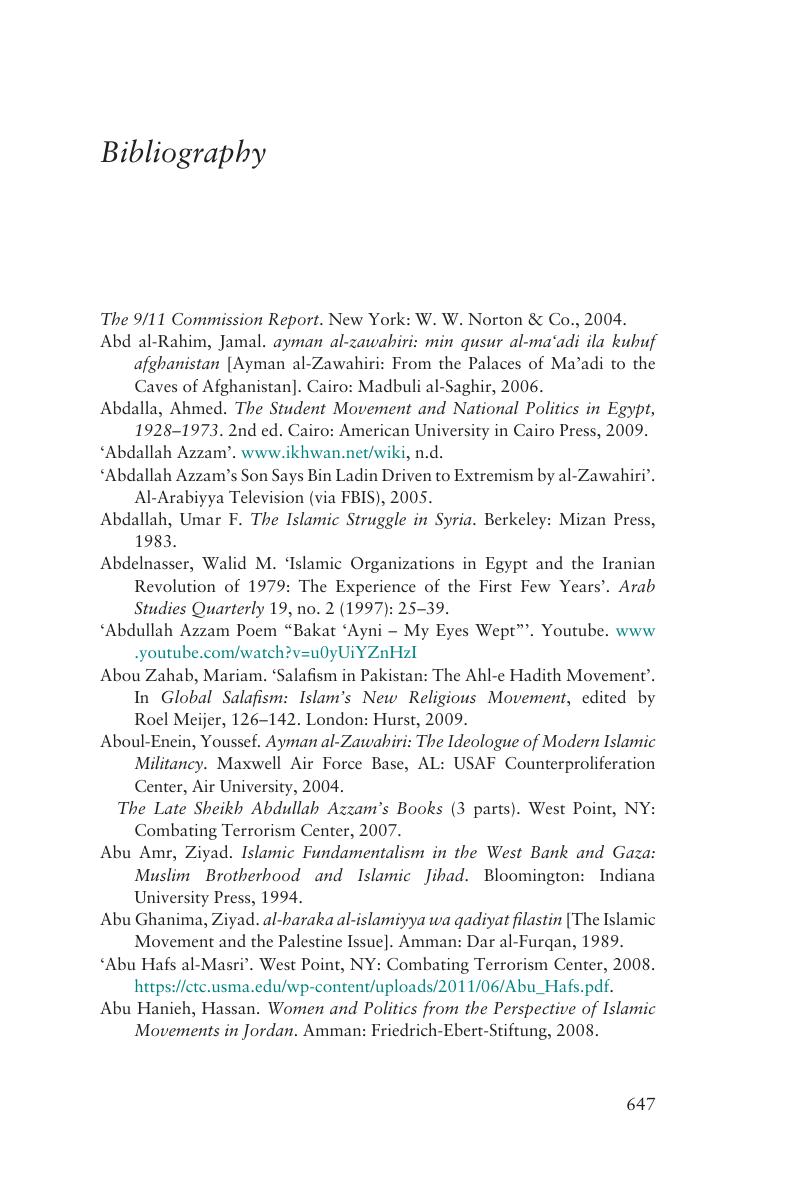Book contents
- The Caravan
- Frontispiece
- The Caravan
- Copyright page
- Dedication
- Contents
- Timelines
- Maps
- Illustrations
- Table and Figure
- Acknowledgments
- Maps
- Introduction
- Prologue
- 1 Palestinian
- 2 Brother
- 3 Fighter
- 4 Scholar
- 5 Vagabond
- 6 Writer
- 7 Pioneer
- 8 Diplomat
- 9 Manager
- 10 Recruiter
- 11 Ideologue
- 12 Mujahid
- 13 Resident
- 14 Enemy
- 15 Martyr
- 16 Icon
- Conclusion
- Note on Sources
- Overview of Abdallah Azzam’s Works
- Notes
- Bibliography
- Index
- Plate Section (PDF Only)
- References
Bibliography
Published online by Cambridge University Press: 26 February 2020
- The Caravan
- Frontispiece
- The Caravan
- Copyright page
- Dedication
- Contents
- Timelines
- Maps
- Illustrations
- Table and Figure
- Acknowledgments
- Maps
- Introduction
- Prologue
- 1 Palestinian
- 2 Brother
- 3 Fighter
- 4 Scholar
- 5 Vagabond
- 6 Writer
- 7 Pioneer
- 8 Diplomat
- 9 Manager
- 10 Recruiter
- 11 Ideologue
- 12 Mujahid
- 13 Resident
- 14 Enemy
- 15 Martyr
- 16 Icon
- Conclusion
- Note on Sources
- Overview of Abdallah Azzam’s Works
- Notes
- Bibliography
- Index
- Plate Section (PDF Only)
- References
Summary

- Type
- Chapter
- Information
- The CaravanAbdallah Azzam and the Rise of Global Jihad, pp. 647 - 681Publisher: Cambridge University PressPrint publication year: 2020



